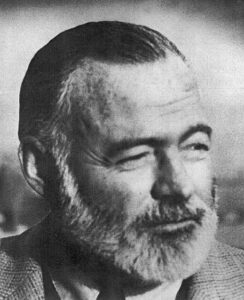
MAHG Graduate Julia Fuette Highlights Slavery in the Constitution
Writing her capstone project, Julia Rae Fuette wanted to synthesize the most important concepts she’d learned in her coursework as a Masters student in American History and Government. At the same time she wanted to design a project that she could put directly to use in her teaching at Cornerstone Christian School in Wildomar, California, a community in California’s southern central valley. At this small K-12 school, Fuette is chair of the history and English departments and teaches a range of high school courses, including American history, American government, American literature, and AP US history.
Fuette selected a theme that she could follow from the Founding to the Civil War. She wrote a 115-page narrative of six different moments in American history when the Constitution’s tacit allowance of slavery in the new American republic became a point of contention in American political life. Each “moment” was defined by primary documents that show the Founders and their successors struggling to reconcile their quest for liberty with the shameful fact of their country’s acceptance of slave labor.
Then she designed seven lesson plans, so that her students, too, might explore those six moments through original documents, after first considering short meditations by Founder John Jay and Civil War leader Abraham Lincoln that set the context for the entire story. In December, her capstone was honored with the Chairman’s award.
Fuette’s advisor, Professor Pete Myers, calls her capstone project “a remarkably well conceived, well researched, and well executed work. Its narrative component tells the complicated, vitally important story of slavery and the Constitution briskly, clearly, and fairly, and her series of accompanying lesson plans should serve her for years to come as a small treasure of pedagogical resources.”
“My work in the Masters program at Ashland taught me to focus on thematic-based teaching,” Fuette said. “Ashbrook’s TeachingAmericanHistory.org website opened my eyes to the wealth of primary sources I could share with my students. This helped me to pull away from the textbook, which simply bombards students with names, dates and facts.”
Fuette had nearly completed another Masters in history at California State University in Long Beach when she found the Ashland University program. She had earned 30 credits at Cal State, but hit a snag when advisors rejected her proposals for a thesis. She enjoyed the three summers she spent in Ashland immersing herself in study of primary sources. In contrast to the focus on historiography at Cal State, which elevates the arguments among contemporary historians, Ashbrook’s program invites one into the minds of American statesmen by asking students to read the documents they wrote while arguing for principles, forging compromises, and shaping law and policy.
“Today, the Constitution and the Declaration provide the themes I use to teach American history. I was not taught that at Cal State.” In government class, Fuette’s students spend a semester going through the first three articles of the Constitution, reading excerpts from “three quarters of the Federalist papers to understand the design of our government. I would never have attempted this if it hadn’t been for the Ashbrook program,” Fuette says.
“From Fuette’s example and those of similarly gifted teachers we are fortunate to assist,” Professor Myers says, he and others who commit their energies to the program “find encouragement in the knowledge that secondary school students in at least some parts of the nation are yet receiving able instruction in the principles and statecraft of the Founders.”



